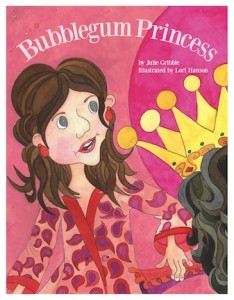
Today, Lori Hanson, illustrator of Bubblegum Princess, continues her posts about character development through illustration. Thanks, Lori!
♦ ♦ ♦
After attending a winter SCBWI conference in New York City in 2011, I was flying over the continent, sketchbook in hand, to return home to California. Now, I will admit that flying in a 747 from coast- to- coast isn’t exactly what it might feel like to catch air thermals while floating along on a bubblegum bubble. However, this notion of being quite surreal was exactly the concept I needed to inspire the first iteration of the Queen’s character in The Bubblegum Princess, written by Julie Gribble.
After re-draws, emails and discussions, Julie and I decided that only corgis and children would have the magical ability to fly through the air with the help of bubblegum bubbles. After all, any worthy sovereign needs her gravity. The Queen may have begun in the air, but she ultimately remained with her feet solidly connected to the Earth throughout the story.
It is the Queen’s character development that I will be discussing here today. Here are images of the first two sketches:
Once out of the air, the Queen looked like this:
Feet on the ground, it was time to get down to business. We explored different attitudes as well as placement of the Queen’s hands and feet. The Queen’s clothes were important, too. Julie was happy with her coiffed hair and crown, complete with matching coat and gloves. Of course, the Queen couldn’t be without a pair of square-heeled pumps. I would experiment with color later.
As you can see in the sketches below, the lines that describe this version of the Queen’s face were of a more exaggerated naturalism. In order to make her expressions more clearly “Queenly”, the Queen was given a set of “black bead” eyes. This trope of Western-style cartoon eye was made iconic by 1920’s and 1930’s INKBLOT Cartoons and taken to the drawing table by many other cartoonists and illustrators (e.g., Charles Schultz for the Peanuts characters)
“Lucy: Do you think my eyes are beautiful, Charlie Brown? “
“Charlie Brown: Yes, they look just like round dots of India Ink.”
I digress. . .
I also did much experimenting with the placement of the eyes. How much space is needed for the bridge of a nose to give a sovereign’s visage authority? After all, it is the Queen who banishes Katy and her family from the palace for her playful passion.
It was fun to put the Queen into more of a psychological space here, highlighting her moment of rage.
The Queen in The Bubblegum Princess seems quite harsh and rigid. In the dénouement, a softer side of her is revealed. I went back to the drawing table where I explored different versions of this attitude. It all culminated with her walk in the garden, not alone but in the company of one of her magical Bubblegum, flying corgis.
Here is a detail of that image:
When you see this image, you know that all is peaceful in the kingdom. Stay tuned for more peeks into character development in this story next month.
Thanks to Beth Stilborn for inviting us to share our creative process on her blog site.
Thank YOU, Lori (and Julie) for taking us behind the scenes in the creation process of your picture book!
To read previous posts in this series, follow these links:
Part 1, How to Make a Picture Book, Series Intro
Part 2, Choosing your Illustrator/Choosing your Author
Part 3a, Story and Character Development, part 1
Part 3b, Story and Character Development, part 2
Part 3c, Story and Character Development, part 3: A Collaboration
Part 3d, Story and Character Development, part 4: Illustration (part a)
Bios:
Julie Gribble was the first picture book author accepted into the Stony Brook Southampton Children’s Literature Fellows program and has been mentored by Emma Walton Hamilton and Cindy Kane Trumbore. She’s a full-time writer and a member of SCBWI, ChLA, BAFTA-NY Children’s Committee and is founder of KidLit TV, www.kidlit.tv, an online video resource for the kid lit community.
Lori Hanson received her Master of Fine Arts from the San Francisco Art Institute and served an apprenticeship under celebrated artist Gregory Gillespie. She’s a member of SCBWI.
Bubblegum Princess, a picture book inspired by the Duke and Duchess of Cambridge, has received a First Place Royal Dragonfly Children’s Picture Book Award, a nomination for a Cybils Award, and is Story Monster Approved!
NY Media Works: www.nymediaworks.com
Lori Hanson’s website: http://www.rosengrove.com/bubblegum-princess.html
Bubblegum Princess website: http://nymediaworks.com/bubblegum-princess
Bubblegum Princess on Amazon: http://www.amazon.com/Bubblegum-Princess-Julie-Gribble/dp/0989091406
Bubblegum Princess in Square Market: https://squareup.com/market/ny-media-works-llc/bubblegum-princess
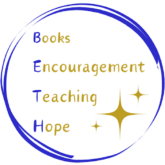

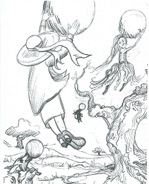



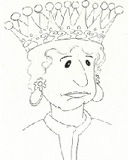

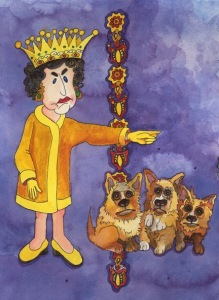
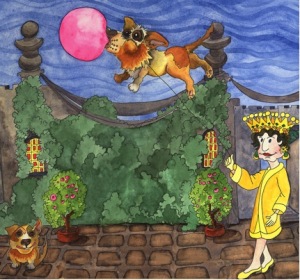
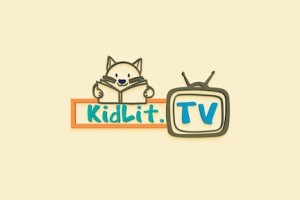
Lovely interview, ladies! I am lately finding myself fascinated with the work of illustrators so I was excited to read this interview!
I find illustrators’ work and methods fascinating, too. Thanks, Kellie!
I’m with Kellie: I like seeing how other illustrators conceptualize and plan their work on a story. It helps me to think of my art own in a different way. 🙂
Facinating to watch the evolution of the queen. I’m in awe of illustrators and love to watch them create. Excellent interview.
Thank you Lori, your process is fascinating and this blog is very educational!
Amazing! I like how the queen comes to be! 😀
Thanks to all of you for your feedback and interest, this gives me perspective! Good stuff!